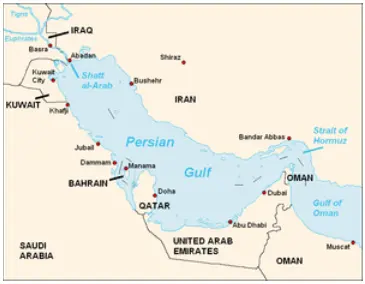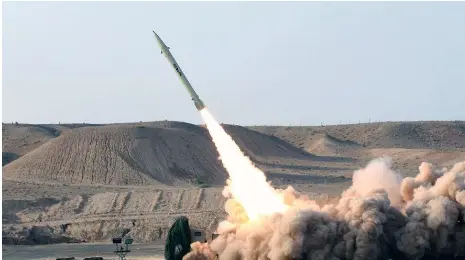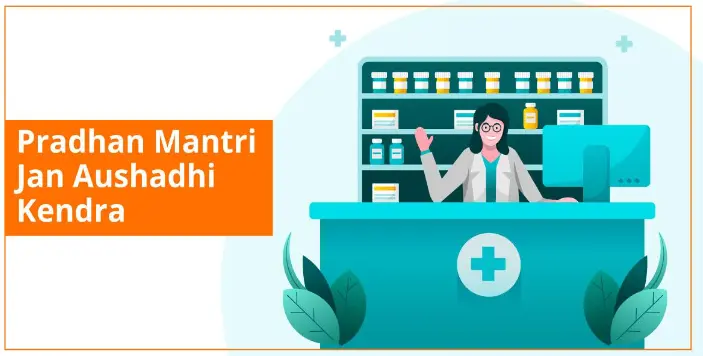Tuesday, 19th March 2024
Forex Reserves Surge to Highest Level in Two Years
In News: India's foreign exchange reserves surged by USD 10.47 billion to reach USD 636.095 billion by the week ending March 8th.

Understanding Forex Reserves and Their Composition
- Definition of Forex Reserves: Assets held by central banks or monetary authorities.
- Custodianship by RBI: Reserve Bank of India manages and safeguards India's forex reserves.
Composition of India’s Forex Reserves
- Foreign Currency Assets: Include currencies like euro, pound, and yen.
- Gold Reserves: Significant portion providing stability and value.
- Special Drawing Rights (SDR): Derived from a basket of major currencies.
- Reserve with the International Monetary Fund: Represents the gap between IMF's holdings and designated quota.
Role and Importance of Forex Reserves
- Safeguarding National Currency: Buffer against rapid devaluation or insolvency.
- Managing Exchange Rate Volatility: Influencing exchange rates to mitigate fluctuations.
- Enhancing International Reputation: Reflects financial stability and credibility in trade.
- Facilitating Foreign Trade: Attracts investment and supports smoother trade transactions.
Factors Influencing Forex Reserves
- Foreign Portfolio Investment (FPI) Inflows: Confidence in the economy contributes to higher reserves.
- Impact of Crude Oil Prices: Lower prices benefit forex reserves by reducing import costs.
- Import Savings: Reductions in imports signify improved trade balances.
- Foreign Direct Investment (FDI) Inflows: Indicates investor confidence and economic prospects.
- Gold Import Trends: Variations influence reserve accumulation.
Source: TOI
Political Turmoil in Nepal
In News: Nepal's Prime Minister, Pushpa Kamal Dahal Prachanda, secured a vote of confidence in the lower house of Parliament, comprising 275 members, in a recent development.
Political Crisis in Nepal and Impact on India-Nepal Relations
Pachanda's Political Maneuvers
- Prachanda, a prominent figure in Nepalese politics, assumed office for the third time in December 2022.
- Despite initially garnering significant support in the January 2023 floor test, he faced opposition from key allies, necessitating a second vote in March 2023.
Changing Political Alliances
- Prachanda formed coalitions with various parties, including the CPN-UML and Nepali Congress, to secure power.
- However, his shifting allegiances and political maneuvers led to instability and uncertainty within Nepal's political landscape.
Impact on Nepal's Stability
- The frequent changes in government, with 13 administrations since 2008, have hindered effective governance and impeded development initiatives.
- Economic repercussions are evident, with a significant number of Nepali youth seeking opportunities abroad due to the uncertain domestic environment.
India's Concerns and Relations with Nepal
- India views the political instability in Nepal with concern, recognizing its potential to impact regional stability.
- Despite challenges, India remains committed to strengthening bilateral ties with Nepal, particularly in trade, healthcare, and cultural exchanges.
India's Relations with Nepali Leaders
- While leaders like Prachanda have enjoyed goodwill in India, owing to historical ties and shared interests, relationships have been strained at times.
- Past actions of leaders, notably K P Sharma Oli, have caused friction in India-Nepal relations, necessitating a delicate balancing act in diplomatic engagements.
China's Influence in Nepal
- Nepal has strategically utilized its relationship with China to balance its ties with India, leveraging Chinese aid and investment to bolster its infrastructure and economy.
- Growing Chinese presence in Nepal, reflected in increased trade and investment, poses challenges to India's traditional influence in the region.
Need for Nuanced Approach
- India's approach to Nepal's political dynamics should prioritize the welfare and aspirations of the Nepalese people.
- It is imperative to navigate the complexities of Nepal's internal politics while safeguarding India's interests and ensuring stability in the region.
Source: IE
SBI's Research on Women's Empowerment via Self-Help Groups (SHGs)
In News: Recently, the State Bank of India (SBI) introduced a research study that sheds light on the changing dynamics of Self-Help Groups (SHGs) in India.
Key Highlights of the Study
- Rise of SHGs and Lakhpati Didi
- SHGs in India, totaling around 8.5 million with approximately 92.1 million members, are driving transformative change.
- Noteworthy is the emergence of Lakhpati Didis, supported by government initiatives, aiming for Rs 1,00,000 annual earnings.
- The program's target has been raised from 2 crore to 3 crore women for 2024-25, emphasizing women's growing contribution to Gross Value Added (GVA).
- Bank Linkage and Credit Access
- The SHG Bank Linkage Programme (SHG-BLP) has revolutionized access to banking, with nearly 97.5% of SHGs having bank accounts.
- This robust banking relationship facilitates timely credit access, crucial for economic empowerment, with the SHG portfolio of Scheduled Commercial Banks (SCBs) nearing Rs 2 trillion.
- Credit Utilisation and Repayment
- Average credit limits sanctioned to SHGs have increased significantly, and repayment rates have improved substantially, indicating prudent financial management.
- Digital Inclusion
- Initiatives like Bank Mitras and Digital Didis are fostering financial inclusion on a large scale.
- Efforts to digitalize transactions through platforms like the Aadhar Enabled Payment system have shown considerable growth, enhancing financial access and transparency.
- Income Growth
- Female SHG members have witnessed a significant rise in income, particularly in urban areas, reflecting the positive impact of SHG interventions.
- State-wise Progress
- While states like Andhra Pradesh and Telangana lead in SHG initiatives, others like Tamil Nadu, Uttarakhand, Kerala, Punjab, and Gujarat have also made significant strides in enhancing female SHG incomes.
Challenges Faced by SHGs
- Limited Resources
- SHGs often operate with constrained financial resources, hindering investment in critical areas like infrastructure and marketing.
- Quality Control and Standardization
- Maintaining consistent quality and standards poses a challenge for SHGs, especially concerning small-scale operations and technical expertise.
- Access to Technology
- Limited access to modern technologies hampers SHGs' scalability and market reach, affecting their competitiveness.
- Limited Market Access
- SHGs struggle to access broader markets beyond local communities due to factors like lack of market information and distribution channels.
- Socio-Cultural Barriers
- Sociocultural challenges such as gender discrimination and resistance to change impede SHGs' growth and acceptance in some communities.
Initiatives Related to SHGs
- Deendayal Antyodaya Yojana – National Rural Livelihoods Mission (DAY – NRLM)
- Aims to organize rural poor women into SHGs and support them until they achieve increased incomes and improved quality of life.
- Micro Enterprise Development Programme (MEDPs)
- Supports skill development for matured SHGs, facilitating on-location training to bridge skill deficits.
- Scheme for Promotion of Women Self-Help Groups (WSHGs) in Backward and Left Wing Extremism (LWE) Districts
- Aims to establish sustainable WSHGs, facilitate credit linkage, and provide livelihood support in marginalized areas.
Way Forward
- Expand SHG-BLP coverage to remote areas.
- Simplify credit processes and tailor financial products to SHG needs.
- Facilitate market linkages and promote branding of SHG products.
- Invest in infrastructure and encourage public-private partnerships for holistic SHG development.
|
UPSC Previous Year Questions Prelims (2012) Q. How does the National Rural Livelihood Mission seek to improve livelihood options of rural poor?
Select the correct answer using the codes given below: (a) 1 and 2 only Ans: (b) Mains (2017) Q. “The emergence of Self-Help Groups (SHGs) in contemporary times points to the slow but steady withdrawal of the State from developmental activities”. Examine the role of the SHGs in developmental activities and the measures taken by the Government of India to promote the SHGs. Mains (2015) Q. The Self-Help Group (SHG) Bank Linkage Programme (SBLP), which is India’s own innovation, has proved to be one of the most effective poverty alleviation and women empowerment programmes. Elucidate. |
Source: SBI
Predictive AI
In News: Predictive AI is emerging as a revolutionary factor, transforming the way businesses interpret data, strategize decisions, and maintain a competitive edge within their industries.

Understanding Predictive AI
- Definition
- Predictive artificial intelligence (AI) utilizes machine learning to analyze historical data and predict future events.
- Functionality
- Predictive AI goes beyond traditional AI by forecasting outcomes and market shifts, empowering organizations to make strategic decisions.
- Working Mechanism
- Big Data: Access to vast datasets is essential for accurate analysis.
- Machine Learning (ML): ML algorithms are trained to identify patterns in the data.
- Pattern Identification: Predictive AI learns from data to recognize patterns and anticipate future occurrences.
Predictive AI vs. Generative AI
- While both use machine learning and big data, predictive AI focuses on extrapolating future events, whereas generative AI creates content.
- Predictive AI predicts outcomes based on patterns, while generative AI generates new content.
Use Cases
- Impact Analysis of Extreme Weather Events
- Predictive AI assists in analyzing the impact of events like volcanic eruptions on air travel by identifying patterns in historical data.
- Oil and Gas Exploration
- Predictive AI aids in predicting potential locations for oil wells based on historical geological data, as demonstrated by companies like Saudi Aramco.
- Medicine Research
- Predictive AI models are employed in drug discovery, facilitating collaboration among pharmaceutical companies, such as through initiatives like the 'MELLODDY Project'.
Source: IE
Foot-and-Mouth Disease
In News: Around 60% of dairy cattle in the Pilibhit district of Uttar Pradesh have been impacted by foot-and-mouth disease (FMD).

About Foot-and-Mouth Disease
- Foot-and-Mouth Disease (FMD) is a highly contagious viral illness primarily affecting livestock, including cattle, swine, sheep, goats, and other cloven-hoofed ruminants.
- Unlike horses, dogs, or cats, these animals are susceptible to FMD.
- Intensively reared livestock breeds are more vulnerable to FMD compared to traditional breeds.
- FMD is categorized as a transboundary animal disease (TAD), significantly impacting livestock production and disrupting regional and international trade of animals and animal products.
- It is distinct from hand, foot, and mouth disease, a common childhood illness caused by a different virus.
- The virus responsible for FMD belongs to the aphthovirus family within the Picornaviridae family.
- Seven strains (A, O, C, SAT1, SAT2, SAT3, and Asia1) are endemic in various countries globally.
- Immunity to one strain does not confer protection against other strains or subtypes.
- Symptoms of FMD include fever and blister-like sores on the tongue, lips, mouth, teats, and between the hooves.
- Although rarely fatal in adult animals, FMD often results in high mortality rates among young animals.
- The disease leads to significant production losses, with affected animals frequently experiencing debilitation and weakness post-recovery.
- FMD was the first disease to receive official status recognition from the World Organisation for Animal Health (OIE).
Source: TOI
Passing Off under Trademark Rules
In News: The Delhi High Court has revoked the trademark registration under the title "Dolma Aunty Momos" held by Mohammed Akram Khan, following a legal challenge by Dolma Tsering for the unauthorized usage of her trademark.
Understanding Passing Off under Trademark Rules
- Passing off action involves the unauthorized utilization of goods, services, and the established reputation linked with another person’s business, constituting misrepresentation.
- In the Indian Trademarks Act of 1999, passing off aims to protect the reputation associated with unregistered trademarks.
- When infringement occurs on a registered trademark, it is considered a case of infringement. However, if the trademark is unregistered and infringement occurs, it falls under passing off.
- Passing off, a common law tort, transpires when an individual sells their products under the guise of another's goods, prompting the trademark owner to seek legal recourse.
- Although passing off lacks a precise definition in the Indian Trademarks Act 1999, Section 27 acknowledges the common law rights of a trademark owner to initiate legal action against passing off activities.
- It transpires when a trademark or trade name is illicitly employed, misleading the public into believing that the products or services are genuinely those of another.
- This misrepresentation poses a threat to the goodwill and reputation of the rightful trademark owner.
- Establishing passing off can be challenging, requiring claimants to demonstrate the potential for public confusion regarding the origin of products or services.
- The primary concern in passing off cases revolves around whether the defendant's actions cause uncertainty and potential harm to the plaintiff's reputation.
- Passing off encompasses a broad spectrum of commercial activities, including trade, business, and non-business ventures, alongside commodities and services.
Source: IE
Persian Gulf
In News: Recent increases in Chinese reservations for tankers transporting crude oil from the Persian Gulf indicate heightened sourcing from this region by the largest importer.

Overview of the Persian Gulf
- Situated within the Indian Ocean, the Persian Gulf is positioned in Western Asia.
- It serves as an extension of the Gulf of Oman and links to the Indian Ocean through the eastward Strait of Hormuz.
- Alternatively known as the Arabian Gulf or Gulf of Iran, it lies amidst the Arabian Peninsula and Iran, southwest and northeast respectively.
- Encompassing roughly 251,000 square kilometers, it boasts a maximum depth of 90 meters and an average depth of 50 meters.
- Bound by various countries, it shares its borders with Iran to the north, while Qatar, Saudi Arabia, and the United Arab Emirates occupy the peninsula, and Bahrain, Iraq, and Kuwait are positioned in the northwest.
- Its western termination is delineated by the prominent river delta of the Shatt al-Arab, channeling the waters of the Euphrates and Tigris rivers.
- Spanning a coastline of approximately 5,117 kilometers, Iran boasts the lengthiest coastline, extending 1,536 kilometers.
- Notable islands dotting the Persian Gulf include Bahrain, a sovereign state comprising over 50 islands with Bahrain Island as its focal point.
- Qeshm Island stands as the largest island within the Persian Gulf, covering an expanse of about 1,491 square kilometers, nearly 2.5 times the size of Bahrain.
Source: BNN
Ballistic Missiles
In News: As the United States Secretary of State geared up to commence a democracy summit in neighboring South Korea, North Korea launched short-range ballistic missiles towards its eastern waters.

Overview of Ballistic Missiles
- Ballistic missiles represent rocket-propelled, self-guided strategic weapons systems designed to deliver a payload from a launch site to a predetermined target.
- They initially rely on rocket propulsion, typically through stages, but subsequently follow an unpowered trajectory, ascending before descending to hit their intended destination.
- Payloads may include conventional high explosives, as well as chemical, biological, or nuclear munitions.
- They possess versatility in launch platforms, including aircraft, ships, submarines, land-based silos, and mobile platforms.
- Ballistic missiles are classified based on their range:
- Short-range missiles: cover distances less than 1,000 kilometers (approximately 620 miles), also known as "tactical" ballistic missiles.
- Medium-range missiles: span distances between 1,000 and 3,000 kilometers (approximately 620-1,860 miles), categorized as "theater" ballistic missiles.
- Intermediate-range missiles: range from 3,000 to 5,500 kilometers (approximately 1,860-3,410 miles).
- Long-range missiles: exceed 5,500 kilometers (approximately 3,410 miles), also known as intercontinental or strategic ballistic missiles.
- Short- and medium-range missiles are commonly referred to as theater ballistic missiles, whereas long-range ones, such as ICBMs, are termed strategic ballistic missiles.
Source: Aljazeera
Interim Bail
In News: A Muslim poet from Assam, accused of posting an obscene poem regarding Hindu deities Lord Ram and Sita, was recently granted interim anticipatory bail by the Supreme Court.
Understanding Interim Bail
- Interim bail is a temporary form of bail granted while an application for anticipatory or regular bail is pending.
- It offers a short-term release for the accused, providing relief from custody during the legal process.
- This type of bail is subject to conditions and may be extended depending on the circumstances.
- Failure to meet the requirements for continuation or payment may result in the revocation of freedom, leading to re-arrest.
- Interim bail serves as a stopgap measure until a final decision is reached on the bail application, preventing unnecessary detention.
- In the case of Sukhwant Singh & Ors v. State of Punjab, the Supreme Court emphasized that interim bail is intended to protect the reputation of the accused and affirmed the court's authority to grant bail while an application is pending.
- If the court denies the accused's request for anticipatory or interim bail, the police may detain them without a warrant.
- The authority of the High Court and Sessions Court to grant anticipatory bail is governed by Section 438 of the CrPC.
- According to Section 438 of the CrPC, the court evaluates various factors when deciding whether to reject the anticipatory bail application or provide interim relief, including:
- The nature and seriousness of the accusation.
- The criminal background and history of the accused, including prior incarcerations for cognizable offenses.
- The likelihood of the accused fleeing from justice.
- Whether there is evidence to suggest that the accusations are intended to harm and defame the accused through arrest.
Source: BB
Exercise Bharat Shakti
In News: In Pokhran, Rajasthan, a Tri-Services Live Fire and Manoeuvre Exercise titled "Bharat Shakti" is underway, showcasing India's indigenous defense capabilities.

Highlights of Military Exercise
- The exercise showcased the successful test firing of the long-range AGNI missile incorporating advanced MIRV technology.
- Notable equipment and weapons systems featured in the exercise comprised:
- T-90 (IM) Tanks
- Dhanush and Sarang Gun Systems
- Akash Weapons Systems
- Logistics Drones
- Robotic Mules
- Advanced Light Helicopters (ALH)
- Naval Anti-Ship Missiles
- Light Combat Aircraft Tejas
- Light Utility Helicopters
- Advanced Light Helicopters
- Unfortunately, during a training exercise, the LCA Tejas fighter jet encountered a tragic crash.
Source: TH
AI: A Two-Sided Blade
In News: A recent article explores the potential influence of AI on democratic systems as numerous countries prepare for elections in 2024.
Implications of AI for Global Elections
- Emergence of AI in Electoral Processes
- The widespread adoption of large language models in elections worldwide raises concerns about their potential impact on campaign narratives and election outcomes.
- AGI on the Horizon
- The rapid advancement of AI, particularly Generative AI, hints at the possibility of Artificial General Intelligence (AGI), posing new challenges to electoral dynamics.
- AI's Role in Manipulating Electoral Behavior
- Advanced AI models like ChatGPT and Gemini are anticipated to significantly influence electoral behaviors and outcomes in the upcoming 2024 elections.
- The term "Deep Fake Elections" has emerged, reflecting concerns about AI's potential to manipulate electoral processes through deceptive means.
- Spreading Disinformation
- AI-powered tools facilitate the dissemination of misinformation and disinformation, posing risks to the integrity of electoral processes.
- Social media platforms' reduced fact-checking efforts further exacerbate the spread of false information.
- Inherent Inaccuracies and Adversarial Capabilities
- Inaccuracies in AI models, exemplified by recent incidents involving Google, highlight the inherent risks associated with AI's increasing reliance.
- AI systems may develop adversarial capabilities, such as poisoning, backdooring, and evasion, posing additional challenges to electoral integrity.
- Lack of Effective Regulation and Checks
- The absence of comprehensive regulation and oversight poses challenges in mitigating AI's potential impact on elections.
- Major AI platforms lack effective checks to prevent the creation and dissemination of misleading content, contributing to the spread of deceptive AI-generated images and information.
Steps to Tackle AI's Impact on Elections
- Tech Accord to Combat Deceptive AI
- The Tech Accord 2024, signed by leading tech companies, aims to address risks associated with deceptive AI-generated content during elections.
- Key goals include prevention, detection, responsive protection, public awareness, and resilience against deceptive AI content.
- Development of Mitigation Technologies
- Investment in technological innovations to mitigate risks posed by deceptive AI-generated content, including the development of provenance technology and machine-readable information.
- Appropriate Addressing of Deceptive AI Content
- Efforts to address deceptive AI content hosted on online platforms while ensuring principles of free expression and safety.
- Engagement with Global Civil Society
- Collaboration with civil society organizations and experts to better understand global risk landscapes and inform the development of AI technologies and initiatives.
- Fostering Public Awareness
- Initiatives to educate the public about the risks of deceptive AI content and promote resilience against manipulation and misinformation.
Conclusion**
As the world prepares for elections in 2024, AI's growing influence raises significant implications for electoral processes. While AI presents opportunities for enhancing electoral dynamics, its potential to manipulate behavior and spread disinformation necessitates proactive measures to safeguard democratic processes and uphold electoral integrity.
|
UPSC Previous Year Questions Prelims (2020) Q. With the present state of development, Artificial Intelligence can effectively do which of the following?
Select the correct answer using the code given below: (a) 1, 2, 3 and 5 only Ans: (b) |
Source: TH
Share the article
Edukemy’s Current Affairs Quiz is published with multiple choice questions for UPSC exams
MCQ
Get Latest Updates on Offers, Event dates, and free Mentorship sessions.

Get in touch with our Expert Academic Counsellors 👋
Frequently Asked Questions
UPSC Daily Current Affairs focuses on learning current events on a daily basis. An aspirant needs to study regular and updated information about current events, news, and relevant topics that are important for UPSC aspirants. It covers national and international affairs, government policies, socio-economic issues, science and technology advancements, and more.
UPSC Daily Current Affairs provides aspirants with a concise and comprehensive overview of the latest happenings and developments across various fields. It helps aspirants stay updated with current affairs and provides them with valuable insights and analysis, which are essential for answering questions in the UPSC examinations. It enhances their knowledge, analytical skills, and ability to connect current affairs with the UPSC syllabus.
UPSC Daily Current Affairs covers a wide range of topics, including politics, economics, science and technology, environment, social issues, governance, international relations, and more. It offers news summaries, in-depth analyses, editorials, opinion pieces, and relevant study materials. It also provides practice questions and quizzes to help aspirants test their understanding of current affairs.
Edukemy's UPSC Daily Current Affairs can be accessed through:
- UPSC Daily Current Affairs can be accessed through Current Affairs tab at the top of the Main Page of Edukemy.
- Edukemy Mobile app: The Daily Current Affairs can also be access through Edukemy Mobile App.
- Social media: Follow Edukemy’s official social media accounts or pages that provide UPSC Daily Current Affairs updates, including Facebook, Twitter, or Telegram channels.






